The increased incidence of power outages, as well as the need to connect consumers to 380 volts, are forcing residents of the private sector to use a three-phase generator. In this case, you need to figure out how to connect an electric generator to the networks of a country house, using the equipment installed in them. To solve the problem, you should familiarize yourself with several ways of inclusion practiced by residents of private households.
Varieties of generators
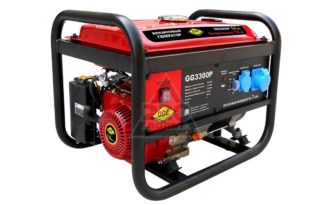
By the type of fuel used in the unit, all known generator devices can be:
- gasoline;
- diesel;
- units powered by gas or wood.
The first two options attract the attention of users who have taken as a basis a ready-made engine running on gasoline or diesel fuel.
Gas and wood-fired devices are less efficient in household use and are rarely used.
According to their purpose, well-known samples of three-phase current generators are divided into main and backup units. The question of how to connect to a household network applies to both models.
Device and basic parameters of generation
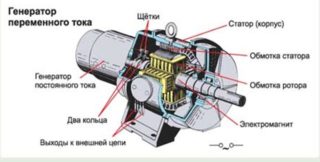
A three-phase generator is a device that converts the mechanical energy of a rotating shaft into electricity. In addition to the movable part associated with the drive, it includes three coils, recruited from a plurality of windings and placed on the stator core. In brushless generators, when the rotor rotates, EMF is induced in the coils, according to their parameters, corresponding to the standards of a 3-phase mains supply. This means the following:
- the resulting voltages are sinusoidal;
- the amplitude of each of the 3 phases is 220 volts;
- the voltage between them is 380 volts;
- the frequency of the generated oscillations is 50 Hertz.
The design feature of such units is a phase shift of 120 degrees.
An alternating voltage is supplied from the stator coils to the serviced line, which provides it with the necessary 380 volt power supply.
How to choose the right three-phase generator
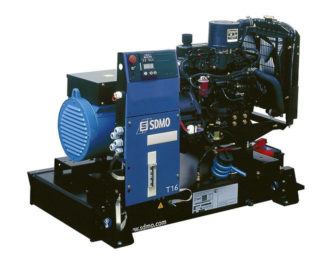
When choosing branded units, you will have to take into account the following characteristics:
- type of energy carrier;
- output power of the device;
- availability of additional functions.
The type of fuel is selected taking into account the specific operating conditions (convenience of storing fuel in a residential building). The output power of the purchased unit is selected taking into account the expected load, this indicator varies from 5 to 6 kW for each single-phase branch. When getting acquainted with additional functionality, special attention is paid to the following features:
- adjustment of the parameters of the 3-phase voltage (its form, in particular);
- the ability to connect additional lines (load capacity);
- the presence of an electromagnetic relay-regulator.
It is important to make sure that the selected model contains indication devices that allow you to visually monitor the level of each of the voltages.
Connection diagrams
Having dealt with the auxiliary questions, they proceed directly to connecting the generator to the serviced line.
Connection via additional switchgear
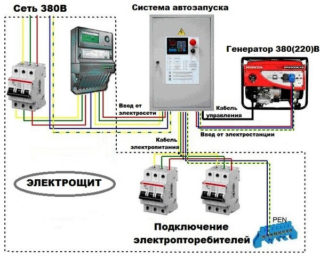
The connection diagram of the machines from the line and the generator is practically the same, which allows you not to change anything in the existing three-phase power network. This approach to connecting a private house to the network is the most reliable and guarantees the successful operation of the equipment connected to it. To implement it, you will need to do the following operations:
- Disconnect the 380 Volt input circuit breaker by disconnecting the home network.
- Install a new 4-pole automatic machine in the dashboard, the output terminals of which are connected by segments of conductors with the input contacts of all linear devices.
- The cable from the generator output with 4 cores (3 phases and zero) is fed to the new machine and each of them is connected to the corresponding terminal.
If an RCD is installed further according to the scheme, during the switching, the wiring of the conductors connected to it (each of the 3 phases and zero) is taken into account.
Connection via a switch
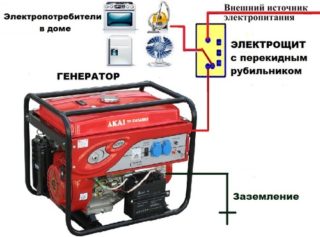
A rocker switch is the same switch, but with three positions. When using it, the buses from the generator device are connected to one set of poles, and the lead wires from the high-voltage line to the other. The central contact set of the switch, the conductors from which go directly to the load, are alternately thrown towards the input from the explosive or to the generator connection. In the middle position of the switch, the entire home network is completely de-energized.
Automatic switching circuit
It is possible to get rid of the need for manual selection of the power source due to the use of an automatic switching circuit for the load connected to it. It includes at least a control module and two cross-connected starters (contactors). The first of these units, made on the basis of a microprocessor, semiconductor transistors or analog microcircuits, performs the following functions:
- recognition of a situation with a loss of electricity in the main supply line;
- the subsequent disconnection of the consumer from it;
- switching it to a branch from a 3-phase generator.
During the operation of the module, which recognizes the loss of the centralized power supply, a rectangular pulse is formed, which is fed to the actuator (contactor coil). This leads to automatic switching of the switch to the mode of operation from an independent generator. When the main power is restored, another control impulse returns the system to its original position.
Through an outlet
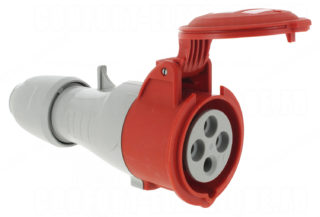
To connect the generator to the mains at home through an outlet, you will need to carefully familiarize yourself with the features of the application of this method. Despite its simplicity and ease of connection, this option has many negative sides, expressed in the following:
- the need to constantly monitor that the introductory machine is turned off;
- the need to purchase a special 4-pole outlet designed for high currents;
- restrictions on the load connected to the generator.
The plug-in method is the worst possible way. Its use is unacceptable under any conditions.








